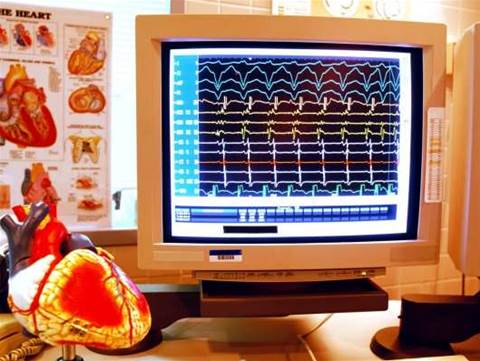According to IDC, the Australian healthcare sector is a late adopter sector. Phillip Allen, research manager for vertical markets said the healthcare sector struggles with the reallocation of budgets to raise sufficient funds for new spending initiatives. As a result, providers remain classified as late adopters and have under-invested in technology for a decade.
"What is worse is that the healthcare sector has historically focused their technology strategies on cost reduction. In the next five years we are not expecting a big improvement, the health sector spending on technology is forecast to remain at $2, million by 2011, which is a very similar level of spending to now," he said.
The majority of IT budgets are consumed by hardware, with spending on IT Services forecast to be relatively modest at 462 million in 2008, however there is definitely growth in this segment.
According to Allen, IT service providers will be critical in helping healthcare providers reach their goals and have a big role to play in providing advice, education and implementing solutions.
Sydney-based IT service provider, Emerging Systems was chosen to help the South Australian Government in integrating patient records across the public hospital system in SA.
Emerging Systems was chosen for the project after it developed a web-enabled clinical information system for medical and nursing staff at St Vincent’s Private Hospital in Sydney. It has been around for nine years and both the CEO of the company and the director worked in the health industry, before starting Emergin Systems.
Richard Hutchinson, director at IT service provider, Emerging Systems told CRN, that IT and Telecommunications (IT&T) in healthcare was a growing issue. Although compared to other industries the average IT spend is less in IT&T services, it is growing.
“As far as our provision to health care clients is concerned we provide services that meet business solutions in a timely and responsive manner. Providing healthcare information and so the issues about IT security, privacy and the availability of patient information in a timely manner becomes crucial,” he said.
Hutchinson asserted that he has been in the healthcare industry for 15 years and has worked in the accounts department of a healthcare organisation.
“The business needs for IT is crucial in Healthcare and I say it for a couple of reasons. It’s well documented that there are staffing shortages in the sector and also the dollars are just not available. I worked in the accounts department of a hospital and when it came to finance time it was a nightmare,” he said.
According to Hutchinson, security and reliability are paramount to building a system that won’t even go down for an hour.
“There is a business impact when accessing clinical records, if something goes wrong then patient could be put in danger,” he said. "Hospitals have an issue about where they store their paper, they have handfuls of folders. I spoke to the chief executive officer of a hospital recently and he told me that if he didn’t find a solution for the hospital’s paper storage, then they would have to get another building to store the paper in, which can be a major expense for the hospital.”
Australian healthcare lags in IT, service providers critical
By
Lilia Guan
on Mar 14, 2008 1:29PM

Got a news tip for our journalists? Share it with us anonymously here.
Partner Content

Tech Data: Driving partner success in a digital-first economy

Tech Buying Budgets for SMBs on the Rise
_(11).jpg&h=142&w=230&c=1&s=1)
The Compliance Dilemma for Technology Partners: Risk, Revenue, and Reputation

Promoted Content
From Insight to Opportunity: How SMB Service Demand is Shaping the Next Growth Wave for Partners

Shure Microsoft Certified Audio for Teams Rooms




.jpg&w=100&c=1&s=0)
_(8).jpg&w=100&c=1&s=0)







.jpg&q=95&h=298&w=480&c=1&s=1)





